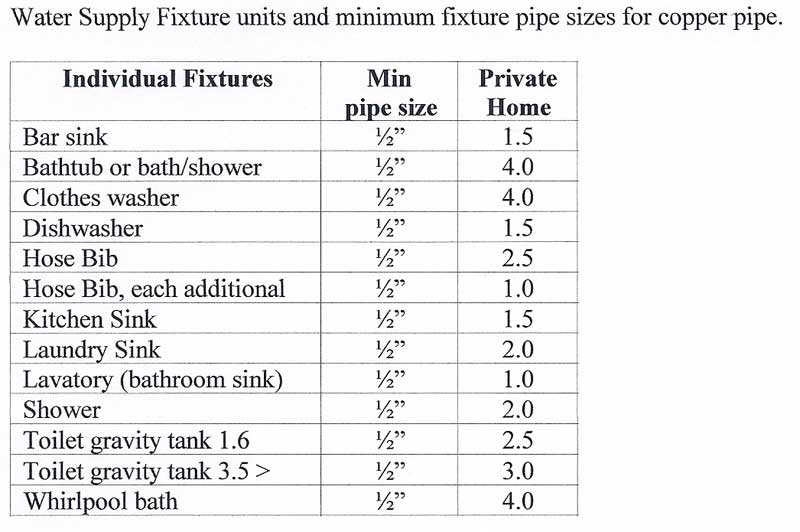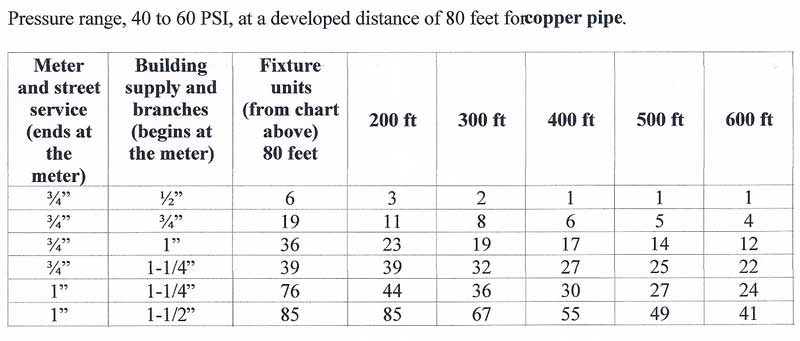TX Hill Country
New Member
I've seen a few posts about long supply runs from water meter to house, however I haven't seen (or found online) any generic calculator or table that applies.
My situation - Water meter is available at top or bottom of property which is about 2000 feet deep, with 140 feet elevation drop from top to bottom.
I want to properly size and select the recommended water supply line, which I'll likely trench and install myself, along with irrigation (drip irrigation will be a topic for the future, I'm aware of the challenges)
I assume it's best to use the meter at the top. I'm not sure yet what size, if it's < 1" I'll need to upgrade it most likely. Future 5000sf house and 3000sf shop will be built (10 acre property). House not designed so I need to make best guess for now, I'll err on the size of more capacity (gallons/minute) rather than less.
Supply run:
Meter -> 70' elevation drop over first 800 feet, then 10' drop for next 600 feet to where the house will be located. 1400' total.
Bringing water from the bottom of land would be a shorter distance, about 600 feet, but the elavation increases 60' and I think that's a problem.
Looking for suggestions about
a) type of supply line and size. Price is not a huge concern, but minimizing leaks and ensuring sufficient flow is
b) any need for pressure reducing along the way. Maybe the supply line can tolerate increases on the downward slope and normal pressure drop per length of supply line will help reduce the pressure.
A reference to a table or calculator would be great since I also will need to run the irrigation, probably in the same trench, and I imagine that will need careful design and layout. The irrigation will be a combo of drip and spray heads. In the future I might put in a well for irrigation on the flat areas closer to the house.
My situation - Water meter is available at top or bottom of property which is about 2000 feet deep, with 140 feet elevation drop from top to bottom.
I want to properly size and select the recommended water supply line, which I'll likely trench and install myself, along with irrigation (drip irrigation will be a topic for the future, I'm aware of the challenges)
I assume it's best to use the meter at the top. I'm not sure yet what size, if it's < 1" I'll need to upgrade it most likely. Future 5000sf house and 3000sf shop will be built (10 acre property). House not designed so I need to make best guess for now, I'll err on the size of more capacity (gallons/minute) rather than less.
Supply run:
Meter -> 70' elevation drop over first 800 feet, then 10' drop for next 600 feet to where the house will be located. 1400' total.
Bringing water from the bottom of land would be a shorter distance, about 600 feet, but the elavation increases 60' and I think that's a problem.
Looking for suggestions about
a) type of supply line and size. Price is not a huge concern, but minimizing leaks and ensuring sufficient flow is
b) any need for pressure reducing along the way. Maybe the supply line can tolerate increases on the downward slope and normal pressure drop per length of supply line will help reduce the pressure.
A reference to a table or calculator would be great since I also will need to run the irrigation, probably in the same trench, and I imagine that will need careful design and layout. The irrigation will be a combo of drip and spray heads. In the future I might put in a well for irrigation on the flat areas closer to the house.


